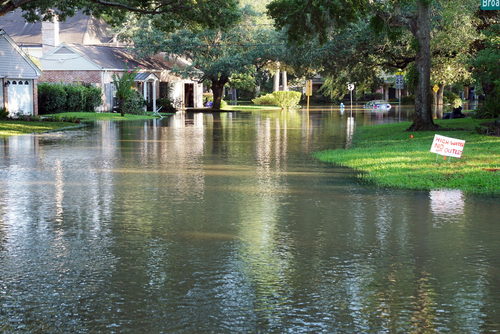Water damage may seem like a simple term, but as certified water damage restoration professionals, we know how complex it can be. There are many things that can impact the severity of water damage, including what type of water caused the damage, and how widespread the damage is.
In our industry, we categorize water into three types, and damage into four classes. In this article, we will explain all seven of these terms. Having an understanding of these standards will help you communicate well with anyone helping you through these tough situations, from your contractor to your insurance agent. Here’s what you need to know.
At Green Clean, we are Institute of Inspection Cleaning and Restoration Certification (IICRC) certified contractors, which means we follow the IICRC Standard for Professional Water Damage Restoration (IICRC S500) definitions for the three categories of water that can cause damage to your home.
Category one water damage is the least harmful. It is defined as water that “originates from a sanitary water source and does not pose a substantial risk from dermal, ingestion, or inhalation exposure.” Examples of category one water sources include:
Materials in your Minneapolis home that are damaged by category one water like drywall, carpet, carpet pads, hardwood flooring, subflooring, cabinets, and more can often be safely dried and restored, not requiring replacement.
Category 2 water damage is caused by water that “contains significant contamination and has the potential to cause discomfort or sickness if contacted or consumed by humans.” Examples of these water sources can include:
Category two water damage comes from significantly contaminated water. More of the soaked materials may need to be removed and discarded. Some damaged items may be able to be disinfected using tools like antimicrobial sprays and HEPA vacuuming.
Category three water damage is the most dangerous, with the IICRC S500 defining it as water that is “grossly contaminated and can contain pathogenic, toxigenic, or other harmful agents and can cause significant adverse reactions to humans if contacted or consumed.” Examples of category three water damage sources that could impact Minnesota homes include:
Because category three water damage comes from grossly contaminated water, a water damage restoration contractor will remove all contaminated materials in your home. Affected items like insulation, hardwood flooring, subflooring, drywall, carpet padding, carpet, and contents like cabinets and furniture will need disinfecting or replacement.
Even if you have water damage from a category one source, it won’t stay that way for long. When it sits for a day or two, and or comes in contact with microorganisms like mold and bacteria, category one water quickly degrades into category two or three water, requiring a more extensive cleaning and restoration process. Fast action is essential to keep water damage from growing and getting worse.
The three categories of water damage define where the water came from. The four classes of water damage define how much water damage occurred, including the total amount of water and the rate at which it should evaporate. Classifying water damage allows restoration professionals to estimate how long clean-up will take, and which tools and techniques will be necessary.
Class one water damage usually only affects part of a room or area. Class one water damage in a large area can occur when the materials present have absorbed only minimal moisture. These situations involve the least amount of water, absorption, and evaporation time – they can be cleaned up and dried out quickly.
Class two water damage affects at least an entire room of flooring, with water that has absorbed up the walls less than 24 inches. In these situations, there is moisture in structural materials like plywood, particle board, structural wood, drywall, and concrete.
In class three water damage situations, water may have come from overhead (such as from a second floor plumbing problem or roof damage), saturating the entire room. The ceilings, walls, carpet, insulation, and subfloor will be soaked with a very large amount of water.
Class four water damage usually involves class three situations that include less porous materials like hardwood, plaster, brick, concrete, and stone. In class four situations, these hard materials are very saturated, requiring longer drying times and advanced techniques in order to get humidity levels back to normal.
At Green Clean, we pride ourselves on detailed, honest communication with all of our valued customers. Having an understanding of the scope of your needs (and our processes) will help everyone get the best results possible. Even category one, class one cases of water damage can add up to thousands of dollars in extensive repairs if they are not restored quickly and completely by professionals.
If you are faced with water damage at your home, get help right away from a team who knows how to handle it. We are available 24 hours a day, 7 days a week to tackle everything from small clean leaks to big dirty floods. Get your Twin Cities home back to normal and keep your family safe with help from Green Clean.
